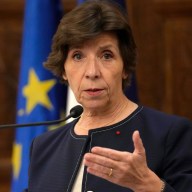 Luckily, “The Wind Rises” won’t be Hayao Miyazaki’s final film.
Luckily, “The Wind Rises” won’t be Hayao Miyazaki’s final film.
Credit: Studio Ghibli
‘The Wind Rises’
Director: Hayao Miyazaki
Voices of: Joseph Gordon-Levitt, Emily Blunt
Rating: PG-13
4 (out of 5) Globes
“The Wind Rises” isn’t the first film legendary Japanese animator Hayao Miyazaki (“My Neighbor Totoro,” “Spirited Away”) said would be his last. And it won’t (or, given that he’s 73, may not) be the last last, either: After announcing last year that this was his retirement picture, he’s since recanted. It would make a good swan song, if it was one. This is the definition of an old master’s film, one that brings all that Miyazaki’s learned to bear on a reflection on his craft.
It’s not about Miyazaki specifically, and not even about animation. Instead he gloms onto a different kind of artist with whom he shares a vague affinity. Jiro Horikoshi, his protagonist, designed fighter planes during World War II. He would seem an odd person for Miyazaki to lionize, given that many of his films are passionately, unsubtly anti-war. But in Horikoshi he sees a kindred spirit: someone driven to create what he dreams, but has to use his talents for business needs with which he may not agree.
Surely only Miyazaki would have been drawn to Horikoshi (voiced, in America, at least, by Joseph Gordon-Levitt). He’s mild-mannered, gentle, sensitive, interesting only because of his passion, and the unusual, unfortunate products made by that passion. Horikoshi’s timing was awful: He came into plane design in time for the beauty of wooden vehicles to go out, making way for the rise of both metallic beasts and WWII. Horikoshi spends most of the film trying to design a style of plane that is thin, light and brutally functional.
But the war is, for the most part, off-screen. Horikoshi works in a bubble, removed from the end result of his actions. He busies himself in drawings and math, not the specifics at war. He even spends the second half madly in love, falling for a pretty girl (voice of Emily Blunt) who’s dying of TB. This doomed romance, not introduced till around the hour mark, can seem to take too much time away from the “action” (for lack of a better word). But its function is sneaky: The film shows that war, like any business, works by having individual, key parts — say, the guy who designs planes — work divorced from the rest of the machine. He labors without thinking of the many who will die from what he creates.
This is and isn’t Miyazaki’s life, too. He’s someone who was lucky to work at a time of peace; the worst he got was being forced to sometimes work in genres (action, war, adventure) that haven’t always suited him. But unlike Horikoshi, what Miyazaki fantasizes about, he can create, using animation.
Miyazaki loves creating fantastical creatures, but he also loves creating semi-realistic and placid worlds.Sometimes “The Wind Rises” seems like it could conceivably function just as well as a live-action work. But Miyazaki makes the relative realism dreamy, and the dreams real-ish. Dreams are where Horikoshi’s love for planes are first stoked, and he returns to them again and again, often hanging with Italian aeronautical designer Giovanni Caproni (Stanley Tucci). But life is like a dream, too. A terrible earthquake that levels Tokyo early on begins with an expressionistic cut from a cigarette being burned. Even the soundtrack has a handmade quality that jibes with the hand-drawn cel animation; some of the sound effects are mouth noises, with airplane motors sounding like someone blowing raspberries. It’s the rare delightful, soothing film about war, not to mention one that runs through regrets and an understanding of one’s mortality and imperfections.
Follow Matt Prigge on Twitter@mattprigge
















